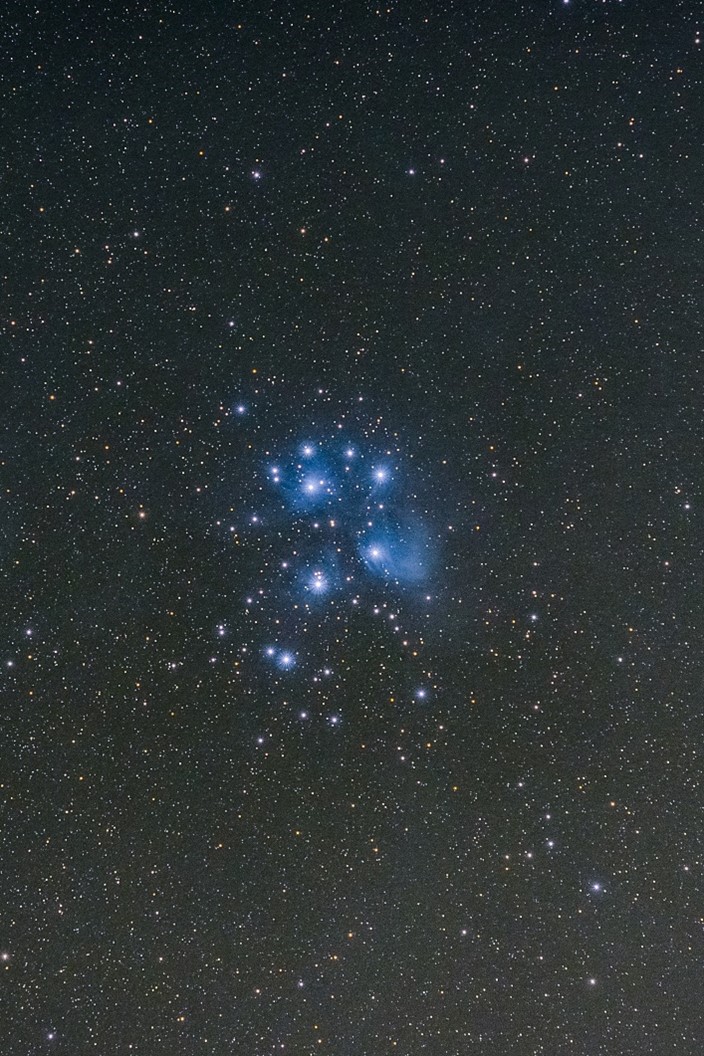
Take a look at these three amateur telescopes in the adjacent image. It may not appear so at first, but all three are the same size. They all have a 60mm aperture (Objective Lens).
Let’s have a closer look to start calculating telescope magnification. They all have the same Objective lens, so why does that matter?
Well, when we talk about how powerful a telescope can be, what we really mean is how much light it gathers?
There’s a reason why the Hubble Space Telescope has a large mirror and other ground-based telescopes are measured in metres, not millimetres. This is because a large aperture gathers more light and that allows us to see dimmer objects and increases the resolution of the optical instrument.
Calculating Telescope Magnification
To understand magnification, or to determine magnification of any telescope we must first perform a simple calculation.
Take the focal length of the telescope in millimetres and divide that number by the focal length of the eyepiece you are using.
For example, let’s take our three telescopes in the illustration and look at each one assuming we use a 20-millimetre focal length eyepiece.

Telescope Number 1 has a focal length of 300 millimetres, now if we divide that by the 20-millimetre eyepiece the magnification is 15 times.
For Telescope Number 2, the focal length is 700 millimetres, so dividing that by a 20-millimetre eyepiece, we get 35 times. And for Telescope number 3 It has a focal length of 900 millimetres, so dividing it by 20 millimetres we get 45 times magnification.

Does the Telescope Magnification matter?
Think about this for a moment, if we change to a 10-millimetre eyepiece, we see the change in magnification for each telescope, but the ratio of magnification doesn’t change among the telescopes.
How does each telescopes length alter what we can see in each telescope?
What actually changes are rather substantial. In the long refractor we would see only part of the well-known Pleiades star cluster, it’s not very much as the field of view is only three quarters of a degree, and the Pleiades is much larger than that.
Moving to our mid-size refractor we can see quite a bit more, just barely fitting the entire cluster into the field of view, but the small Refractor is where we can see far more, and the view frames the cluster nicely.
So, the lower magnification and shorter focal length with its wider field of view can help us see more of the star cluster.
What is the Telescope F Ratio?
Remember, all three telescopes have the same aperture but different lengths.
This time, if we divide the focal length by the aperture or diameter across the lens, we arrive at some different numbers.
But these are fixed numbers for every telescope and do not change – the long refractor is 15 to 1 as we divide 900 millimetres into the aperture of 60 millimetres and arrive at 15 for an F ratio of F15. Quite a long focal ratio telescope.

The mid length refractor is a shorter F ratio 700 millimetres divided by 60 millimetres is F11.6 and the short little refractor has the shortest focal length, 300 divided by 60 is F5.
So, the longer F ratio telescopes provide more magnification with the same eyepiece. This makes it easier to get high magnification for planets but harder to see wide field views like the Pleiades.
How to Use a Telescope | Part 6 | Calculating Telescope Magnification
We hope this explainer has helped you when calculating telescope magnification. Now you are all set to move to next article in the UK Telescopes guide on how to use a telescope!
If you are still uncertain as to whether you should choose a telescope or spotting scope, please don’t hesitate to contact on of our experts via our handy Chat Tool in the bottom right corner of the page.


